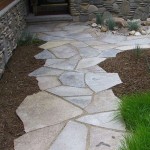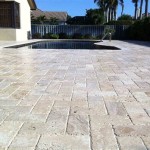How To Paint Cement Patio Blocks Without Sanding Them
Patio blocks offer a durable and affordable option for creating outdoor living spaces. However, over time, the harsh elements can fade and discolor these blocks, making your patio look dull and unsightly. Painting is an effective way to restore the beauty of your patio and enhance its aesthetic appeal. Traditionally, sanding was considered an essential step before painting cement patio blocks to create a smooth surface for the paint to adhere to. However, there are now alternative methods available that eliminate the need for sanding, making the painting process easier and less time-consuming.
In this article, we will guide you through the steps on how to paint cement patio blocks without sanding. We will provide detailed instructions, recommended products, and helpful tips to ensure a successful painting project that will transform your outdoor space.
Essential Aspects of Painting Cement Patio Blocks Without Sanding
Cleaning: Preparing the surface is crucial for successful painting. Remove any dirt, debris, or loose cement from the patio blocks using a power washer or stiff brush. Allow the blocks to dry completely before proceeding.
Acid Etching: This step helps create a slightly rough surface, improving paint adhesion. Apply a concrete acid etching solution to the patio blocks, following the manufacturer's instructions. Rinse the surface thoroughly with water and allow it to dry.
Priming: Primer acts as a base coat that enhances paint adhesion and provides a uniform surface for the paint to adhere to. Apply a high-quality concrete primer to the patio blocks using a paintbrush or roller. Allow the primer to dry according to the manufacturer's instructions.
Painting: Choose a concrete-specific paint in your desired color and finish. Apply a thin, even coat of paint to the patio blocks using a paintbrush, roller, or spray gun. Allow the first coat to dry completely before applying a second coat for optimal coverage and durability.
Sealing: To protect the painted surface from wear and tear, apply a concrete sealer. Choose a sealer that is compatible with the type of paint used and follow the manufacturer's instructions for application.
Additional Tips for Success
- Use high-quality products designed for concrete surfaces to ensure durability and longevity.
- Paint during favorable weather conditions, such as a dry day with temperatures between 50°F and 80°F.
- Allow ample drying time between each step of the process to prevent peeling or blistering.
- Apply multiple thin coats of paint rather than one thick coat to achieve a smooth and even finish.
- Protect your painted patio from heavy foot traffic or direct sunlight until the paint and sealer have fully cured.
By following these steps and utilizing the recommended techniques, you can transform your cement patio blocks without the hassle of sanding. Enjoy a vibrant and refreshed outdoor living space that will enhance the beauty and functionality of your property.:strip_icc()/painted-concrete-front-porch-f8fbce81-280edfaa6d834691a475a9770298cfaf.jpg?strip=all)
How To Paint Concrete Cover S Or Stains For A Fresh Start

How To Paint An Outdoor Concrete Patio With Pictures Wikihow

How To Repaint A Painted Concrete Porch Cuckoo4design

Diy Front Stair Transformation How To Paint Concrete

Patio Blocks Make Your Own Soil Cement Diy Pavers

How To Diy Concrete Garden Slab Stencilling Home Ideology

The Best Paint To Use For A Concrete Porch Or Patio Floor Cuckoo4design

How To Repaint A Painted Concrete Porch Cuckoo4design
How To Paint Concrete Floors Bunnings

Enliven Drab Concrete But Not With Paint The Seattle Times
Related Posts








